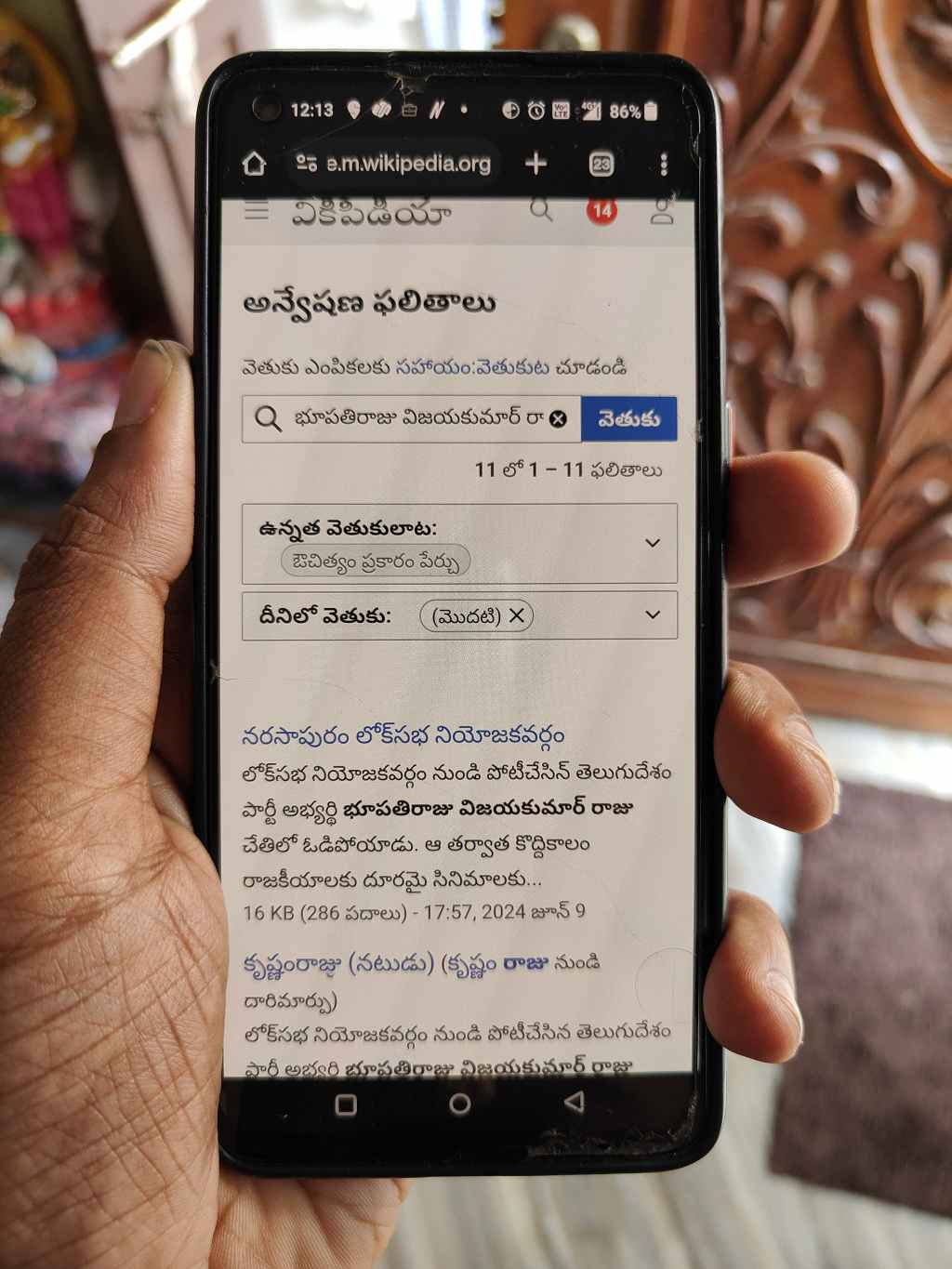I want to begin with an anecdote from my experience in the vast and diverse world of open knowledge sharing. It involves an experienced Telugu Wikimedian training a newbie, over a telephonic conversation. The veteran Wikimedian, with a wealth of knowledge, attempted to guide the newcomer through the steps of creating an account and making edits on Wikipedia. However, the new user struggled to grasp the instructions. He couldn’t find the options his mentor was describing, particularly when it came to creating a new article. The senior Wikimedian had advised him to search the topic they wanted to edit and find a red link, but the newbie couldn’t find any.
The root of the issue was soon discovered. The newbie was accessing Wikipedia via his mobile device, while his mentor was working with the desktop version. This incongruity illustrated the gap between experienced users and newcomers in the Wikipedia community. This story is not unique to the Telugu community or even India but represents a global challenge, especially for the Global Majority countries.1

As someone who has organized and supported outreach activities in India, I have seen firsthand the necessity of investment in mobile editing that can revolutionize the Wikimedia movement in India, South Asia, and other Global Majority countries. It’s not just an Indian issue, but a global one. Many countries which cannot afford laptops for the masses can provide mobile internet and mobile internet usage is growing exponentially.
The year 2016 marked a significant turning point in the Indian internet industry when “Jio” announced free internet for several months. This resulted in cheaper data charges and a surge in internet users for the next few years. Big tech companies like Google started focusing on building technology in various Indian languages such as Hindi, Bengali, Marathi, Telugu, Tamil, etc. These efforts were aimed at improving the mobile experience of their apps and technology, coinciding with the global shift towards Mobile first.2
The democratization of internet access in India, fueled by affordable data plans, also significantly impacted the Wikimedia movement. There was an influx of users accessing Wikipedia, mirroring the broader pattern of increased internet usage. This development could have presented an opportunity for a growth spurt within the Wikimedia community. However, a critical factor restrained this potential growth: the nascent stages of mobile editing features on Wikipedia.
Many of the new users accessing Wikipedia were doing so on their mobile devices. Few of these users weren’t just reading articles; they were aspiring contributors with new energy and ideas. However, they often found themselves stymied by the lack of user-friendly mobile editing features.
The difficulties faced by these mobile editors weren’t minor inconveniences. There are significant barriers that hindered their ability to contribute effectively. The mobile editing experience was far from optimal, and this led to a frustrating user experience for many. Consequently, the Wikimedia community’s growth was not as robust as it could have been, despite the surge in internet users in India.
Initiatives such as Project Tiger and the Wikimedia Foundation’s Hardware Donation Program were designed to support contributors who made significant contributions and needed laptops. These contributors either had non-functional laptops or had never owned one, often relying on mobile devices or borrowed computers from schools or colleges. While Project Tiger focused solely on South Asia and has other objectives, the Hardware Donation Program is global in scope and confines itself to the donation of depreciated but still useful hardware assets (majorly laptops) to users who need them. A report on the Hardware Donation Program from 2017-2019 showed that India had the most recipients (12), a trend that continues with many applications still coming from India. This trend highlights the necessity of improving the mobile editing experience to bridge the gap between the experiences of laptop and mobile users as much as possible.
Therefore, the situation highlighted a critical need for the Wikimedia movement to invest in improving the mobile editing experience. It’s not just about providing alternative means of access; it’s about making sure that the primary mode of access for a majority of users—mobile devices—is as user-friendly and intuitive as possible.
It is a welcoming initiative to see the Wikimedia Foundation is currently investing in improving mobile editing. While there has been significant progress, there is still much work to be done. The Global majority Wikimedia technology priorities, to which CIS-A2K made some contributions and is committed, also consider mobile editing one of the priority aspects. The document says “Considering that 70% of people from the Global Majority exclusively access the Internet using mobile devices, break down barriers that hinder access and contribution to the free knowledge ecosystem by optimizing the mobile infrastructure and prioritizing the development of the visual editor for mobile devices.”
In this context, CIS-A2K conducted a study on the mobile commons app and its contributors in India. We are working on understanding the current status of mobile editing, future opportunities and challenges, in collaboration with Gopala Krishna A, a long-time Wikimedia contributor from India. We hope to complete and publish these studies soon which we believe will help us understand the challenges and explore possibilities.
This journey towards improving mobile editing is a testament to the Wikimedia movement’s commitment to inclusivity and accessibility. It’s an ongoing journey, one that will continue to evolve as technology and user needs change. But the goal remains the same – to ensure that everyone, regardless of their device or location, can contribute to the world’s largest free knowledge platform, Wikimedia.
- Global South represents the Global Majority; Ref: https://meta.wikimedia.org/wiki/Global_Majority_Wikimedia_Technology_Priorities ↩︎
- https://www.businessinsider.in/how-the-jio-effect-brought-millions-of-indians-online-and-is-reshaping-silicon-valley-and-the-internet/articleshow/70723349.cms ↩︎

Can you help us translate this article?
In order for this article to reach as many people as possible we would like your help. Can you translate this article to get the message out?
Start translation